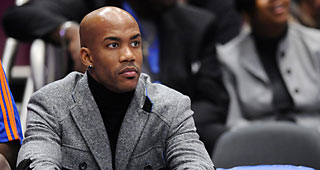Grassroots basketball has changed dramatically in the 18 years since “The Last Shot” was published. Summer league teams and All-Star camps, in their infancy in 1994, are now the main avenue for even low and mid-major players to be identified by college coaches. That, in turn, has marginalized the traditional high school season depicted in the book.
However, the social factors that author Darcy Frey highlights -- the crumbling infrastructure of inner-city schools, the abject poverty in many star player’s backgrounds and the ugly underbelly of the recruiting process -- are the same as they ever were. For basketball fans who want a glimpse of players lives beyond the hardwood, “The Last Shot” is as eye-opening, heartbreaking and relevant as it was when it first came out.
The book tells the story of four high school basketball stars, teammates at Lincoln High. Located at the very end of a New York City subway line, the Coney Island school is also the last stop in the education of most of its students. Three of the book’s protagonists -- Tchaka Chipp, Corey Johnson and Russell Thomas -- are rising seniors, hoping to catch the eyes of D1 coaches. A 14-year-old Stephon Marbury is the fourth.
On the court, their games fit together perfectly. Chipp is the big man, a 6’8 jumping jack who dominates the smaller centers in the Public School Athletic League. Johnson is the athletic slasher, Thomas the pure shooter and Marbury the floor general, with an advanced feel for running a team honed from countless hours on the Coney Island playgrounds.
Nothing comes as easy off the court, where Lincoln’s history of talented washouts loom over every decision they make. Marbury’s three older brothers had all been high school superstars, yet none had a degree or a pro career to show for it. Johnson and Thomas, for all their talent, are pursued mainly by junior colleges after failing to get the minimum necessary score on their SAT’s.
Perhaps not coincidentally, Chipp, the only one not from Coney Island, is also the only one who doesn’t struggle with standardized tests. He draws the attention of coaches like PJ Carlesimo, Rick Barnes and Jim Boeheim, giving the reader a rare inside glimpse into the high-stakes world of recruiting. It’s a world where the odds are heavily stacked against the players. The coaches pursue them as if their jobs depended on it, but they aren’t the ones moving back to the projects if it doesn’t work out.
To survive, the players need a level of maturity far beyond their years. Johnson’s family worries that the time he spends chasing girls will cost him his best chance to go to college while Thomas is wrecked by anxiety over his future. He hones his jumper by lofting thousands and thousands of shots from a chair, haunted by an incident the previous year where he almost took his own life.
As the book progresses, it’s almost impossible not to root for Thomas, Johnson and Chipp as they let Frey into their lives. It’s a testament to his skill as an author that he blends into the background of the book, more reporter than participant. Yet there’s clearly a Schrodinger Cat’s effect occurring: his presence as an observer is changing, at least on some level, what is actually happening.
Marbury is the one who notices first. More of a closed book than the other three, he is a charismatic cipher who never lets Frey get too close. With a swagger that belies his age, the roots of the troubled image he would acquire in the NBA are easy to see. At one point, his father tells Frey that the family will no longer participate in the book without financial compensation.
For fans who use sports to escape the financial stress in their own lives, there’s no greater villain than the player obsessed with money, either taking it in college or chasing it in free agency. Indeed, years after the events of “The Last Shot”, the New York Daily News was shocked by the “extravagance” of Marbury’s recruitment to Georgia Tech. In the NBA, he made waves when he opted out of a potential dynasty with Kevin Garnett on the Minnesota Timberwolves to be the “alpha dog” with the New Jersey Nets.
But after watching his three older brothers lavished with affection before being used and discarded, Marbury’s view of the game’s economic superstructure was quite different than that of the average fan’s. When coaches came to his house, there wasn’t enough furniture for them to make their pitch sitting down. And even though his signature on a letter of intent was worth millions of dollars, he was supposed to give it away for free.
Since its publication, the magazine article that formed the heart of “The Last Shot” won a National Magazine Award as well as a Livingston Award. Any mention of those honors, however, is tucked away on the back cover of the newest paperback edition. Instead, a bright orange sticker on the front proclaims that the book “features an in-depth look at the making of superstar Stephon Marbury”.

Jonathan Tjarks wrote on the NBA for RealGM from 2011-2016 before joining The Ringer.
Follow @JonathanTjarks on Twitter.


